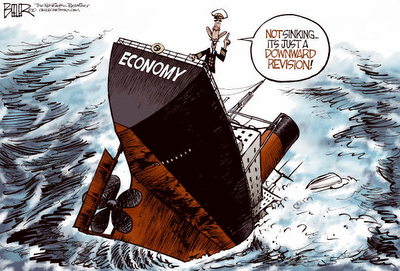There really is no other explanation but a global trade slump that can account for the steep decline in the prices of basic essential commodities like oil and copper, and also the decreased demand for shipping capacity reflected in the Baltic Dry Index.
The troubled Chinese economy, its reduced demand for commodities, the devaluation of its currency to try to capture more trade, and the Chinese support for a new trade alliance in competition with the new U.S./Japanese TPP alliance — all these are symptoms that indicate that aggregate global buying power has stalled out. That means that investment capital is unable to find new profitable investments in the global marketplace, which is very bad news for finance capitalism as a global system.
At this point let me refer readers to Gail Tverberg and her blog, Our Finite World, which focuses on the key interactions between energy and economics. In fact we now see just the sort of troubled global economy that we might anticipate from a world that peaked in production of historically cheap conventional oil almost a decade ago in 2006. Tverberg is able to explain the global economic situation so clearly, so convincingly, and so persistently that she has attracted a huge popular economic following. One of her recent posts drew over a thousand reader responses; “Low Oil Prices – Why Worry?.”
…click on the above link to read the rest of the article…




 Image credit: freshidea – Fotolia
Image credit: freshidea – Fotolia






 The pleasingly plump.
The pleasingly plump.


